Table of content
Pickling daikon radish, also known as white radish or mooli in some regions, is a culinary art that transforms this humble vegetable into a delightful and crunchy snack or side dish. Daikon radishes are known for their long, cylindrical shape, mild flavor, and crisp texture, making them ideal candidates for pickling. By following a few key steps and tips, you can create a pickled daikon radish that is not only delicious but also retains its signature crispiness. This guide will walk you through the entire process, from selecting the perfect daikon radish to storing your pickled creation.
Understanding Daikon Radish
Before diving into the pickling process, it’s essential to understand the basics of daikon radish. Daikon (Raphanus sativus var. longipinnatus) belongs to the Brassicaceae family, which includes broccoli, cabbage, and kale. Native to East Asia, daikon radishes have been cultivated for thousands of years and are a staple in many Asian cuisines. They are low in calories but high in vitamins and minerals, particularly vitamin C, potassium, and dietary fiber.
When selecting daikon radishes for pickling, look for firm, smooth, and unblemished roots. Freshness is key; avoid those with soft spots, cracks, or discoloration. The size of the daikon can vary, but for pickling, medium-sized roots are often easier to handle and ensure more uniform pickling results.
Preparation Before Pickling
Cleaning and Peeling
Start by thoroughly washing the daikon radish under running water to remove any dirt or debris. Depending on the recipe and your personal preference, you may decide to peel the daikon. Peeling is optional but can help remove any tough outer skin or imperfections. If you prefer a more rustic look and texture, you can scrub the daikon clean and leave the skin on.
Slicing and Shaping
Once cleaned and peeled (if desired), it’s time to slice the daikon. The shape and thickness of the slices will affect the pickling time and final texture. For a crunchy pickle, aim for thin, even slices. You can use a sharp knife for hand-slicing or a mandoline for more precision. Popular shapes include rounds, matchsticks, or half-moons.
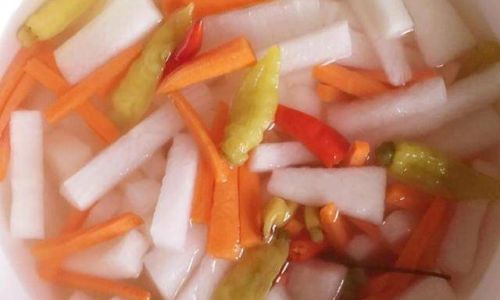
Salting
Salting is a crucial step in the pickling process that helps draw out excess moisture from the daikon, firming up its texture and creating a better environment for the pickling brine to penetrate. Spread the sliced daikon in a single layer on a clean kitchen towel or in a colander. Sprinkle generously with coarse salt, then toss to ensure even coverage. Let the daikon sit for about 30 minutes to an hour, occasionally tossing to redistribute the salt and moisture.
After the salting period, rinse the daikon under cold water to remove excess salt, then pat it dry using a clean kitchen towel or paper towels. This step ensures that your pickled daikon won’t be overly salty and helps maintain its crispiness.
Pickling Brine Basics
The pickling brine is the lifeblood of your pickled daikon. It provides flavor, preserves the vegetable, and maintains its crisp texture. The basic components of a pickling brine include vinegar, water, sugar, and salt, but you can customize it with various spices, herbs, and flavorings to suit your taste.
Vinegar
Vinegar is the primary acid in pickling brines, providing the tangy flavor and preserving qualities. Different types of vinegar can yield vastly different results. Common choices include:
- Rice Vinegar: Mild and slightly sweet, ideal for Asian-inspired pickles.
- Apple Cider Vinegar: Has a fruity, slightly sweet flavor that pairs well with daikon.
- Distilled White Vinegar: Strong and tangy, often used in traditional pickling recipes.
- White Wine Vinegar: Offers a clean, crisp flavor that complements a variety of spices.
Water and Sugar
Water dilutes the vinegar, creating a more balanced brine, while sugar adds sweetness to counterbalance the acidity. The ratio of vinegar to water and the amount of sugar can be adjusted to your taste preferences. Generally, a 1:1 ratio of vinegar to water is a good starting point, with sugar added to taste.
Salt
Salt enhances flavor and acts as a natural preservative. A small amount of salt (usually around 1-2 tablespoons per quart of brine) is sufficient.
Adding Flavor
To elevate your pickled daikon beyond the basics, consider incorporating various spices, herbs, and flavorings. Popular additions include:
- Garlic: Adds a subtle, savory depth.
- Ginger: Provides a fresh, spicy kick.
- Red Pepper Flakes: For a hint of heat.
- Carrots or Bell Peppers: For added color and sweetness.
- Dill, Mustard Seeds, or Coriander Seeds: For an aromatic, earthy flavor.
The Pickling Process
Combining Ingredients
In a large, non-reactive pot (stainless steel or enamel-coated), combine your chosen vinegar, water, sugar, and salt. Heat the mixture over medium heat, stirring occasionally, until the sugar and salt are fully dissolved. If using spices or herbs, add them to the brine at this stage and let them simmer for a few minutes to release their flavors. Remove the pot from heat and let the brine cool to room temperature.
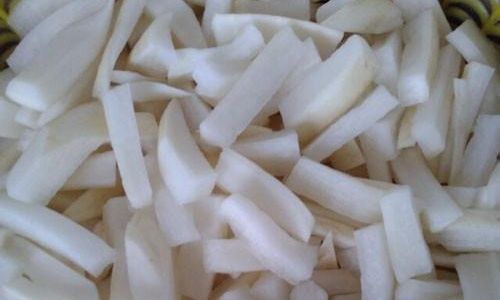
Packing the Jar
While the brine is cooling, prepare your pickling jar. Ensure it is clean and free of any soap residue. Pack the salted and dried daikon slices tightly into the jar, pressing down gently to eliminate air pockets. If using additional vegetables or flavorings, layer them in with the daikon.
Pouring in the Brine
Once the brine has cooled, pour it over the daikon in the jar, ensuring all pieces are fully submerged. If necessary, use a weight (like a small, clean stone or a pickling weight) to keep the daikon submerged. The brine should cover the daikon by at least half an inch to prevent exposure to air, which can lead to spoilage.
Sealing and Storing
Tightly seal the jar with a lid and label it with the date and contents. Place the jar in a cool, dark place, such as a pantry or cellar. The ideal temperature for pickling is between 65-70°F (18-21°C). Avoid exposing the jar to direct sunlight or extreme temperatures, which can affect the pickling process and the final texture of the daikon.
Waiting and Tasting
Pickling times can vary depending on the recipe and your personal preference for flavor intensity and texture. Generally, daikon radishes will be ready to eat after 2-3 days of pickling, but they can continue to develop flavor over several weeks. It’s essential to taste your pickled daikon periodically to check for doneness and adjust seasoning if necessary.
Long-Term Storage
Properly pickled daikon can be stored in a sealed jar in a cool, dark place for several months. Over time, the flavors will meld and intensify, making your pickled daikon even more delicious. If you notice any off odors, mold, or discoloration, discard the pickles immediately.
Serving Suggestions
Pickled daikon is incredibly versatile and can be enjoyed in various ways. Here are a few serving suggestions:
- As a Side Dish: Serve it alongside grilled meats, stir-fries, or sushi.
- In Salads: Add it to mixed greens, rice salads, or pasta salads for a crunchy, tangy boost.
- On Sandwiches and Wraps: Use it to add texture and flavor to sandwiches, wraps, or roll-ups.
- As a Condiment: Offer it as a condiment at the table, much like pickles or relish.
Troubleshooting Tips
- Soft Pickles: If your pickled daikon turns soft, it may be due to over-exposure to air or not enough vinegar in the brine. Ensure the daikon is fully submerged and use an appropriate vinegar-to-water ratio.
- Too Salty: Reduce the salt in the brine if your pickles are too salty. Taste the brine before pouring it over the daikon.
- Not Enough Flavor: If your pickles lack flavor, consider adding more spices, herbs, or vinegar. You can also let them pickle for a longer period.
Conclusion
Pickling daikon radish is a rewarding culinary endeavor that yields delicious, crunchy snacks or side dishes. By following the steps outlined in this guide, you can create a pickled daikon that balances tangy vinegar, sweet sugar, and savory spices, all while retaining its signature crisp texture. Experiment with different vinegars, spices, and herbs to find the perfect combination for your taste. With a bit of patience and practice, you’ll soon be enjoying homemade pickled daikon that rivals any store-bought variety. Happy pickling!
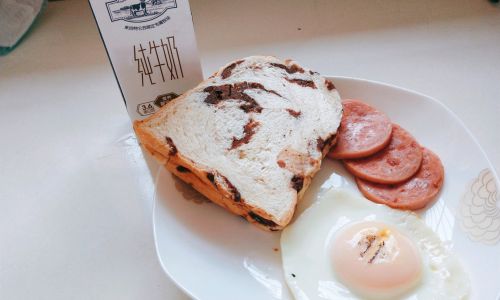
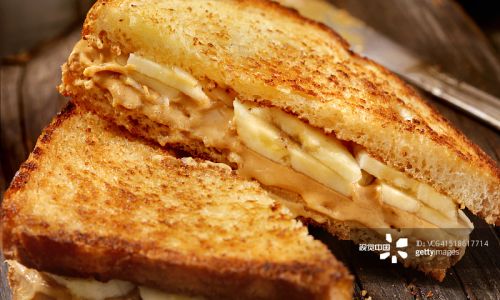

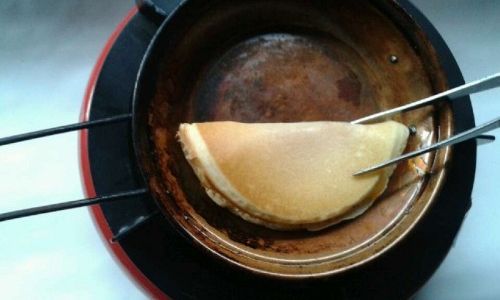


0 comments